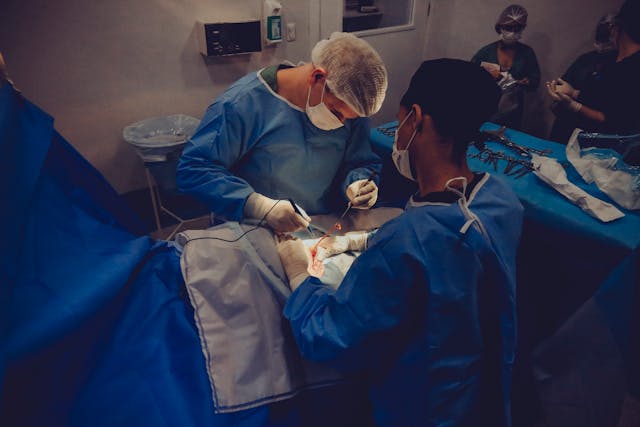
How does chilling a patient after cardiac arrest work? If the body temperature of a person whose heart has stopped beating is lowered, they can survive for longer without oxygen, which gives the medical staff longer to fix and resuscitate the person. Chilling a patient is an experimental technique that may or may not become mainstream.
Chilling a patient after cardiac arrest is done to reduce the body’s rate of oxygen use. Our bodies obviously take in oxygen through the lungs and it is passed all around the body via the blood stream. The liver, brain, and heart use the most oxygen. The liver uses 20.4%, the brain 18.4%, and the heart 11.6%. All of our muscles use 20% and our kidneys use 7.2%. We use about a quarter of a liter of oxygen every minute when we are at rest and about 4 liters a minute when we are exercising. If our supply of oxygen runs out, we cannot survive for very long. After about one minute without oxygen, brain cells begin to die. After three minutes, the damage to the neurons in the brain is probably irreparable. After five minutes, the brain and all of the organs start to shut down. After 10 minutes lasting brain damage is inevitable. After 15 minutes, survival is impossible. However, there are ways around this, and that is what chilling patients is about.
Our bodies use about a quarter of a liter of oxygen at rest when our body temperatures are at normal. If you start to reduce the body temperature, the metabolic rate slows down and the oxygen requirement of the body goes down. For every one degree Celsius that the body temperature is lowered, the metabolic rate slows by 5 to 7%. If someone’s body temperature is lowered to 30℃, the metabolic rate will drop to about half. If you can get the temperature even lower, the metabolic rate will drop even more.
So, what use is that? When someone who has suffered a severe injury, such as a gunshot, is brought to the hospital, they have often lost a lot of blood. Doctors have to work out what is wrong with the patient, give them more blood, fix them, stabilize them, and then hope they get better. When people have lost a lot of blood there is a very good chance that their heart will stop working, which is cardiac arrest. It can also happen from the shock of the injury because the electrical signals that make the heartbeat can be disrupted. This is different to a heart attack because the heart just stops beating and blood stops moving around the body. Once the heart has shut down, blood and oxygen can no longer reach the other parts of the body and the brain starts to die.
The doctors have a very short amount of time to get the body working and the blood pumping again. Problems start to snowball and there is too much for them to fix, usually meaning the patient dies. If they can chill the body down, they can lower its metabolic rate and the brain can survive for longer. This gives the doctors and surgeons more time to work out what is wrong with the patient, fix them, and restart their hearts. The survival rate is higher if emergency rooms can chill the patients.
How do they do it? The most common method of chilling a patient is with a chilled saline solution. The patient is in the ER and they have lost a huge amount of blood. Their chest is usually open and their heart has stopped. The chilled saline is injected into a vein and it is pushed around the whole body as the blood is removed by a machine. The saline brings the body down to the required temperature and the patient can then be operated on in an operating theater. Surgeons have far more time to fix the patient and they are less likely to make mistakes. Once the operation is complete and the patient is stable, the saline is pumped out and blood is pumped back in. The heart is restarted and the patient is slowly warmed up. Trials are ongoing, but it does seem that it will be successful.
Our body slowing down when we are cold is connected to the mammalian diving response. Nearly all mammals have the ability to lower their metabolic rate when they fall into cold water. If you fall fast first into cold water, your body will automatically lower the metabolic rate and shunt oxygen to the places it is needed. It will bring spare oxygen out of your spleen. It will its hardest to last for as long as possible. People have been resuscitated after falling in cold water and being underwater for over an hour. And this is what I learned today.
Photo by Vidal Balielo Jr.: https://www.pexels.com/photo/man-operating-a-surgery-3376790/
Sources
https://en.wikipedia.org/wiki/Emergency_Preservation_and_Resuscitation
https://www.the-scientist.com/doctors-test-if-rapid-chilling-can-save-trauma-patients-lives-66767
https://www.spinalcord.com/blog/what-happens-after-a-lack-of-oxygen-to-the-brain
https://www.ncbi.nlm.nih.gov/pmc/articles/PMC3078506/
https://homework.study.com/explanation/which-organ-of-the-body-uses-the-most-oxygen.html
https://www.bbc.com/future/article/20190423-the-man-who-ran-out-of-air-at-the-bottom-of-the-ocean
https://en.wikipedia.org/wiki/Diving_reflex
https://en.wikipedia.org/wiki/Targeted_temperature_management
